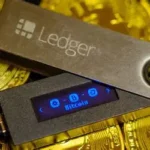In this article, I will discuss Flare Network Crypto which is an advanced blockchain network for the cross-chain interoperability of assets and data across blockchains such as Bitcoin, XRP, and Ethereum.
Smart contracts, which are ordinarily not associated with these chains, can be added to these networks so as to broaden their capabilities.
With the incorporation of smart contracts and decentralized oracles, Flare is geared towards DeFi while still being scalable to broaden usage and have low transaction costs which makes it an ideal participant in the crypto environment.
What is Flare?
Flare is a non-centralized blockchain platform which aims to provide interoperability across blockchains.
Flare can have smart contracts with chains which do not have them traditionally, like Bitcoin and XRP, by utilizing the Avalanche consensus protocol.
The network intends to build an interconnected ecosystem where data and assets can freely move across different blockchains, increasing their usefulness and expanding their usefulness in DeFi and more.
Here’s an overview table for the Flare Network :
| Feature | Description |
|---|---|
| Blockchain Type | Decentralized, Interoperable |
| Consensus Mechanism | Avalanche Consensus Protocol |
| Native Token | FLR (Flare) |
| Smart Contract Support | Enables smart contracts on non-smart contract chains like Bitcoin and XRP |
| Main Goal | Interoperability between different blockchains |
| Use Cases | Decentralized Finance (DeFi), Asset Tokenization, Data Sharing |
| Key Technologies | Flare Time Series Oracle (FTSO), State Connector |
| Launch Date | 2020 |
| Ecosystem Partners | Ripple, Litecoin, Dogecoin, Ethereum (via Ethereum Bridge) |
Key Features of Flare Coin
Interoperability
With the use of Flare Coin, users can transfer both data and assets to and from other blockchains, thus allowing for free communication and interaction amongst different blockchain networks.
Smart Contract Capability
With the Flare Coin, chains that do not support smart contracts such as Bitcoin and XRP can now use and execute smart contracts, thus making them compatible with the ever-increasing decentralized applications.
Decentralized Oracles
Flare Coin uses FTSO (Flare Time Series Oracle) to deliver dependable data feeds in real time to smart contracts.
Scalability and Speed
Due to the Avalanche consensus mechanism Flare Coin employs, transaction processing is fast and highly scalable, which is essential for DeFi (Decentralized Finance) applications.
Who are the founders of Flare (FLR)?
The firm Flare was founded by Hugo Philion, Sean Rowan and Nairi Usher, currently serving as CEO, CTO and Chief Scientist respectively.
All three are machine learning students at University College London where they met for the first time.
Where can I buy Flare (FLR)?
Flare (FLR) is currently trading on a number of exchanges, with cryptocurrency and stablecoin pairs available.
What is the Flare (FLR) token used for?
FLR is the token of the Flare network and it serves a multitude of purposes such as payment, charging transaction fees, and staking. It can also be used to wrap WFLR, which is an ERC-20 version of the token.
The usage of WFLR tokens extends further from being delegated to FTSO data providers, where they can also be used to take part in governance. All such functions are versatile and do not bind the tokens to be restricted to a specific EVM compatible dApps.
To obtain WFLR, users can mint them by first depositing FLR tokens into a smart contract and then, after the tokens are converted, wihtdrawing them.
How Safe is Flare?
Security is a primary concern when developing Flare, so multiple solutions were created to protect the network and its users. Flare employs the Avalanche consensus protocol.
It is efficient and extremely secure while finalizing transactions almost instantly. It also has a high level of attack resistance.
The network uses other decentralized oracles too, such as the Flare Time Series Oracle (FTSO) which guarantees that the data used within the smart contracts is accurate.
Furthermore, by implementing staking and validator nodes, Flare is able to enhance its network security while making participants act in good faith. While no system is completely free from risk, Flare’s approach focuses on safety via decentralization and strong protocols.
Flare vs. Competitors
| Feature | Flare | Ethereum | Polkadot | Cardano | Solana |
|---|---|---|---|---|---|
| Interoperability | ✔️ | ❌ | ✔️ | ❌ | ❌ |
| Smart Contract Support | ✔️ | ✔️ | ✔️ | ✔️ | ✔️ |
| Decentralized Oracles | ✔️ | ❌ | ❌ | ❌ | ❌ |
| High Scalability | ✔️ | ❌ | ✔️ | ✔️ | ✔️ |
| Low Transaction Fees | ✔️ | ❌ | ✔️ | ✔️ | ✔️ |
| Governance | ✔️ | ✔️ | ✔️ | ✔️ | ✔️ |
| EVM Compatibility | ✔️ | ✔️ | ✔️ | ❌ | ✔️ |
Where Flare Token Available
| Platform | Trading Pairs | Supported Features | Website Link |
|---|---|---|---|
| Binance | FLR/USDT, FLR/BTC | Spot trading, staking, futures trading | Binance |
| KuCoin | FLR/USDT, FLR/BTC | Spot trading, margin trading | KuCoin |
| Gate.io | FLR/USDT | Spot trading, staking | Gate.io |
| Bitrue | FLR/USDT, FLR/BTC | Spot trading, staking | Bitrue |
| P2B | FLR/USDT, FLR/BTC | Spot trading, staking | P2B |
| GateHub | FLR/XRP | Asset management, staking, wallet integration | GateHub |
Flare Team

Final Thoughts
This company’s Flare project aims to improve connectivity within the blockchain environment, allowing it to carve a niche within the crypto sphere.
Flare paves the way for new decentralized applications by bringing forth the concept of smart contracts on non-smart contract chains, such as Bitcoin or XRP. Its decentralized oracles combined with its strong scalability capabilities firmly establish it in decentralized finance (DeFi) as well as in cross-chain communication.
There are other competing blockchain technologies that Flare has to go against; however, it stands out because it bridges the gap between distinct networks and supports more versatile token functionality.
If adopted, Flare has the potential of greatly impacting the infrastructure of future blockchain systems.









